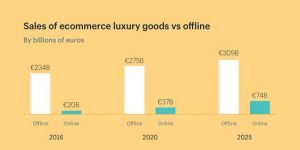Think back to Q4, 2016 – you and your team are sat around a conference table to review the emerging trends and technologies from the past year as you develop your 2017 strategy.
But even with your 2017 digital strategy in hand, it’s impossible to take into account how fast SEO trends and practices evolve. Things like customer usage and expectations – not to mention the roll out of Google’s master plan for the mobile web – are always changing, meaning agencies and companies must be agile and forward thinking in their 2017 approach to SEO.
With that in mind, I’ve put together a top ten list of tips to keep in mind throughout the year:
1. Embrace the evolution of SEO
The relationship between technical SEO, content marketing and link building is widely debated in terms of what strategies and how they should work together – or not. I’ve spoken about the future of SEO in the past, but to explain it simply, because SEO makes demands and content marketing fulfils those demands, a strategy that incorporates both makes for a perfect fit. The evolution of SEO doesn’t mean agencies aren’t doing traditional (or technical) SEO anymore, but that the ways in which we get links to our client’s site has changed.
A lot of what Content Marketing for SEO purposes involves is finding ways in which to get other websites to hyperlink to client’s websites. In theory, the more votes or links they have, the higher rankings they’ll get. This is still important because how Google ranks your SEO is based on the number of links you have and the quality of those links.
Many companies will hire an in-house team to look after the technical SEO, but often what those teams lack are resources to come up with ideas for content, someone who can design, write, build, implement these changes, and promote the content through PR. So, really, it’s all borne out of SEO – content for SEO purposes, link building for SEO purposes and PR for SEO purposes.
In short, your SEO campaign will fail unless you integrate content marketing and conversely, your content marketing campaign will fail unless you integrate SEO. At the moment, businesses are looking at SEO, but more forward thinking businesses are focusing on getting their content in front of the right audience for a very low cost. The link should just be an added value.
2. Focus more on building an API and less on your website
Especially this year and beyond, you need to focus on developing an API to serve your content across a multitude of screens and can provide the same experience across a number of devices, rather than focusing solely on your website.
To give you an idea of the power of APIs, MusixMatch, the world’s largest provider of lyrics, their app and website is all powered by the same API. Because the website talks to the API and the app talks to the same API to source all of its content, making updates across channels a streamlined process.
Because of this, brands are being advised to focus less on their website and more on developing an API. Unfortunately, many of companies aren’t doing this either because it’s just now known about or it’s perceived as too difficult an undertaking in the beginning. But the future of SEO isn’t your website, so investing the resources upfront to make this switch will put you in a much better position for the year ahead.

3. Embrace open data and what it can do for your technical SEO
This past summer, I wrote about the future of technical SEO, where I talk about how we’ll see a pivotal shift in technical SEO over the next few years from functioning as a performance auditor for websites to focusing their efforts on open data strategies. In other words, how brands can use their data to secure organic visibility across a wide range of apps, platforms and devices.
Because of this, companies should be working to ensure their apps are optimised as Google is pushing more traffic through open data. The future of this could mean optimising your apps via an API to allow a search engine to crawl your app or other platforms in the same way that Facebook gets its information from other websites or APIs. To utilise open data successfully, you’ll need to make sure to code your website or app in a way that simply points out to a search engine things like your business address, videos and reviews. Which leads me to my next point…
4. Find the beauty in simplicity
I’ve worked with many clients that have a fantastic website in terms of UX or they have thought a lot about their brand, but what they’ve forgotten is the common sense element of it. For example, they haven’t thought about how people actually describe what their product is and how they search for it online. Sometimes companies can get quite into their own specific language, but fundamentally a cup is a cup, at least when it comes to how people search online. While bespoke vocabulary can work for platforms like TV and print publications, you can’t call a cup an innovative circle solution on your website. It is what it says on the tin and sometimes companies that are very established, well respected brands, risk going too far with their own language.
Because while many brands spend quite a bit of creative resources and time creating a bespoke vocabulary for what they do and who they are, SEO is lay speak. It’s all about the average person who searches for your products service, so creating a simplified vocabulary on your mobile apps and website is imperative to ensure you’re optimising your SEO. For example, if an estate agent company that specialised in luxury property abroad uses their own vocabulary e.g. ‘investments beyond borders’ for what they do and who they are, while this may be good for branding purposes, if you were to cover the picture of properties on their website you would have no understanding of what they do, and neither will the search engines that you’re trying to rank higher on.
5. Accept that sometimes the sequel is better than the original
I could go into the history of HTTP/1 and how its successor HTTP/2 saved the day, but long story short HTTP/2 makes websites “naturally” faster which makes for much better user experience. Implementing HTTP/2 if you are building new site is a no brainer. If your site is already up and running, you should be checking whether any of your existing speed optimisation is not going to stand in the way. It’s quite a simple process to make the switch, but only about 11.5% of brands are adopting this protocol as of writing.
HTTP/2 can potentially up to double the speed of your websites loading time, along with being better suited to multitasking and efficiency. While there are no direct benefits to your SEO by using HTTP/2, increasing your loading speed will improve user experience, and through that improved user experience are an important signal for Google’s algorithm that your website means business. And as such Google might find it worthy of ranking boost.

6. Optimize your apps
There are newer elements of technical SEO which don’t involve your website, and it’s now possible to optimize an app like you would a website. App optimization includes the process of ranking highly in an app store’s search results and top charts rankings. Ranking higher in search results and top charts rankings will drive more downloads for an app. This ties in nicely with the capabilities of APIs, because by ensuring you’re optimizing your apps you’ll be able to more effectively utilize your API.
This is a very new, cutting edge process, but something that will definitely impact SEO strategies in the future due to the shift from website to mobile apps as user’s primary mode of researching, shopping and purchasing consumer goods.
7. Recruit Siri and Cortana for the job
No new news here, but still worth pointing out. Voice search queries have doubled from last year, and while the percentages may stay the same (20%) the volume is estimated to increase.
Our generation is the first one which openly prefers texting to calling. This can be seen as preference to deal with our problems and needs on our own, without the necessity to interact with other people: we prefer online shopping, order contractors and taxis through an app. We want to be saved the hassle of having to do the small talk, or negotiating with an actual human being. It saves time and makes our lives more comfortable.
The way in which users access information and content is changing, and you should be prepping your app for voice search. Check out Google’s has published guides on how to mark-up content of apps to help Google Assistant better understand and even execute purpose of your apps.
8. Understand your personas to help develop content strategically
This might seem like a no brainer, but a lot of what makes a successful SEO strategy is understanding your audience and how they consume information. Your company has worked hard to create a business proposition and you want to ensure you’re reaching the right audiences based on their online and mobile habits.
Building personas for the purposes of SEO helps companies understand who these people are and if they were going to buy their product, what would they search for online. From there you can develop a strategy of different keywords that those personas would search for and then you can look to see where gaps are on your website, and develop content that is specifically tailored to these personas.
9. Your personas may be different, but their attention span is not
According to a Nielsen Norman study, during an average website visit, readers only have time to read 28% of the content, skimming the rest and only focusing on paragraphs that target their search interests. While long pages liberally scattered with organic keywords might bump you up the search rankings, it’s no longer what the audience wants to read (outside of industry analysis data pieces).
If readers are spending such a minimal amount of time on your page, your job as an SEO specialist is done, since you’ve got them to the site. But your copywriting ability and your marketing skills are lacking – you’re not turning these readers into leads.
Embrace this minimalistic approach to your SEO by to improve user engagement. If you’re careful, you can ensure that all your most important points follow this design, to capture your “scanner’s” interest, and turn them into a reader. This requires good information architecture – ensuring your information is laid out in a readily accessible form. Good sub-titles go a long way, and leading your paragraphs with your most important point will catch the eye and drag the brain in.
10. Whatever your strategy, make sure it’s flexible
The shift from traditional commerce, communication and marketing to this digitally focused, more streamlined approach is a concern in the same way that people were concerned about the internet and people going to the store and shopping online. But these shifts in SEO are nothing more than a change in consumer behaviour that we as a business have to get used to. People prefer using mobile devices because they tend to be faster, easier to use, and provide a more consistent experience. Less and less people are going to be going on their website to figure out who they are and interact with their brands, and we need to accept that.
For the past 10 years, companies have seen the website as their home with everything pointing to the website. No one actually needs to go to the site (and no one really wants to). People will interact with a brand in different ways. Brands should think of themselves as entities that are visible across loads of different channels at once, rather than pushing everyone to one page. From a company’s point of view, it’s much more advantageous to get all of their customers to go to one place, because they can track it, they can build a community around it, but I think with websites becoming less and less relevant, 2017 will be more about diversifying how you communicate your business rather than focusing on one platform like a website.
Whether you’re building, revisiting, or reinventing your SEO strategy…
SEO practices are always changing. You may have your plan mapped out for the coming year, but much like your ‘new year, new me’ ethos, SEO has to be approached with an open mind and a commitment to being accepting of change. If you can be successful in adapting to these new trends, you’ll set yourself up for a better, more agile SEO strategy in the future.
Digital & Social Articles on Business 2 Community(48)









